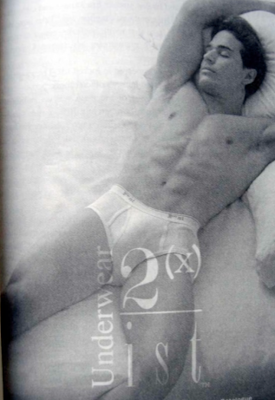Lecture - Identity
Aims:
To introduce historical conceptions of identity
To introduce Foucault’s ‘discourse’ methodology
To place and critique contemporary practice within these frameworks, and
to consider their validity
To consider ‘postmodern’ theories of identity as ‘fluid’ and ‘constructed’ (in particular
Zygmunt Bauman)
To consider identity today, especially in the digital domain
Theories of Identity:
ESSENTIALISM (traditional approach)
Our biological make up makes us who we are.
We all have an inner essence that makes us who we are.
POST MODERN THEORISTS DISAGREE
Post-Modern theorists are ANTI-ESSENTIALIST
Physiognomy - The more vertical your face was the more intelligent you were believed to be, in the image below it shows that the most vertical faces are those of white ethnicity and the least to be more an African or Caribbean decent.
Phrenology - If your animal instincts were more apparent you were more likely to be a criminal.
Physiognomy legitimising racism -
Chris Ofili , Holy Mary Virgin 1996
Historical phases of Identity
Douglas Kellner – Media Culture: Cultural Studies, Identity and
Politics between the Modern and the Postmodern, 1992
Pre modern identity – personal identity is stable – defined by long standing roles
Modern identity – modern societies begin to offer a wider range of social roles. Possibility to start ‘choosing’ your identity, rather than simply being born into it. People start to ‘worry’ about who they are
Post-modern identity – accepts a ‘fragmented ‘self’. Identity is constructed
Pre-Modern Identity
Institutions determined identity
Marriage, The Church, monarchy,
Government, the State, Work
‘Secure’ identities
Related institutional agency with vested interest
Farm-worker - landed gentry
The Soldier - The state
The Factory Worker - Industrial capitalism
The Housewife - patriarchy
The Gentleman - patriarchy
Husband-Wife (family) - Marriage/church
Modern identity
19th and early 20th centuries
Charles Baudelaire – The Painter of Modern Life (1863)
Thorstein Veblen – Theory of the Leisure Class (1899)
Georg Simmel – The Metropolis and Mental Life (1903)
Gustave Caillebotte (1848 - 94),
Le Pont de l’Europe, 1876
Baudelaire – introduces concept of the ‘flaneur’ (gentleman-stroller)Veblen – ‘Conspicuous consumption of valuable goods is a means of reputability to the gentleman of leisure’
Simmel :
Trickle down theory
Emulation
Distinction
The ‘Mask’ of Fashion
Gustave Caillebotte
(1848 - 94),
Paris Street, Rainy Day,
1877
Georg Simmel
‘The feeling of isolation is rarely as decisive and intense when one actually finds oneself physically alone, as when one is a stranger without relations, among many physically close persons, at a party, on the train, or in the traffic of a large city’
Edvard Munch, Evening on Karl Johan,
Oil on Canvas, 1892
Simmel suggests that:
because of the speed and mutability of modernity, individuals withdraw into themselves to find peace. He describes this as ‘the separation of the subjective from the objective life’
Postmodern identity
'Discourse Analysis'
Identity is constructed out of the discourses culturally available to us.
What is a discourse?
‘a set of recurring statements that define a particular cultural ‘object’ (e.g., madness, criminality, sexuality) and provide concepts and terms through which such an object can be studied and discussed.’ Cavallaro, (2001)
Possible Discourses
Age
Class
Gender
Nationality
Race/ethnicity
Sexual orientation
Education
Income
Discourses to be considered
Class
Nationality
Race/ethnicity
Gender and sexuality
Class
Humphrey Spender/Mass Observation, Worktown project, 1937
Looking at how the rich/upper class lived and how the working class lived.
Martin Parr, New Brighton, Merseyside, from The Last Resort, 1983 - 86
Martin Parr, Ascot, 2003
‘“Society” …reminds one of a particularly shrewd, cunning and pokerfaced player in the game of life, cheating if given a chance, flouting rules whenever possible’
Bauman (2004), Identity, page 52
Nationality
Martin Parr, Sedlescombe, from Think of England, 2000-2003
Martin Parr, Think of Germany, Berlin, 2002
Alexander McQueen, Highland Rape collection, Autumn/Winter 1995 - 6
‘Much of the press coverage centred around accusations of misogyny because of the imagery of semi-naked, staggering and brutalised women, in conjunction with the word “rape” in the title. But McQueen claimed that the rape was of Scotland, not the individual models, as the theme of the show was the Jacobite rebellion’.
Vivienne Westwood, Anglomania collection, Autumn/Winter 1993 - 4
Race/Ethnicity
Chris Ofili No Woman, No Cry 1998
Chris Ofili, Captain Shit and the Legend of the Black Stars , 1994
Gillian Wearing, from Signs that say what you want them to say and not signs that say what someone else wants you to say, 1992 - 3
Alexander McQueen, It’s A Jungle Out There collection, Autumn/Winter 1997 - 8
Gender and sexuality
Flapper, 1925
One of the first images of woman showing her legs in a way which was seen to be sexual and provocative at the time.
Gillian Wearing, from Signs that say what you want them to say and not signs that say what someone else wants you to say, 1992 - 3
Masquerade and the mask of femininity
Cindy Sherman, Untitled Film Stills, 1977 - 80
Sarah Lucas, Au Naturel, 1994
WonderBra
Post modern theory:
Identity is constructed through our social experience.
Erving Goffman The Presentation of Self in Everyday Life (1959)
Goffman saw life as ‘theatre’, made up of ‘encounters’ and ‘performances’
For Goffman the self is a series of facades
Zygmunt Bauman
Identity (2004)
Liquid Modernity (2000)
Liquid Love (2003)
‘Yes, indeed, “identity” is revealed to us only as something to be invented rather than discovered; as a target of an effort, “an objective”’





































